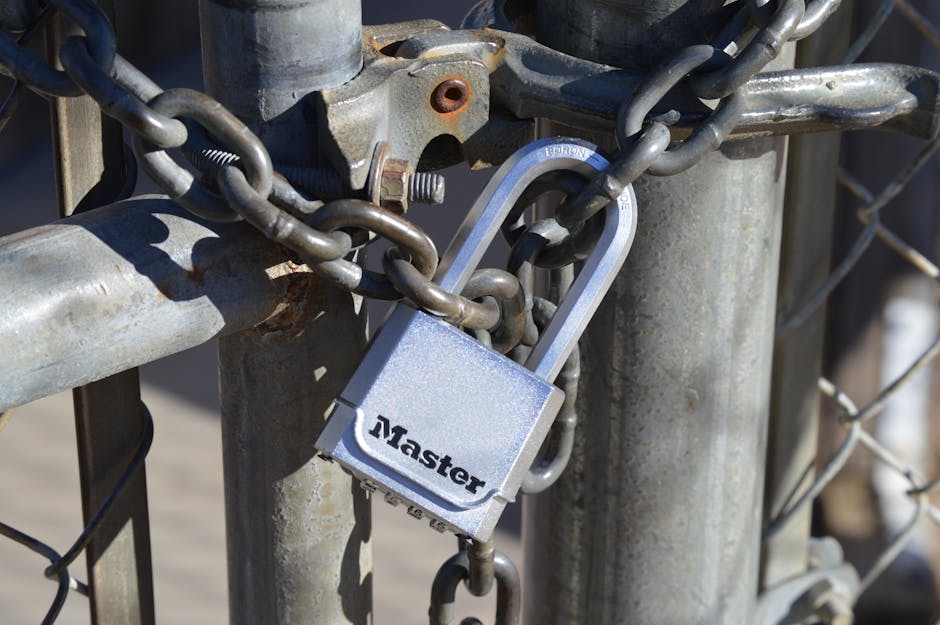Why Your Brand’s Reputation is Your Most Valuable Asset
Brand reputation protection is the shield that guards your business against digital threats and negative perception, determining whether customers choose you or your competitors.
Effective brand reputation protection includes:
- Monitoring: Tracking brand mentions across the web, social media, and review sites.
- Engagement: Responding quickly to all customer feedback.
- Prevention: Building strong brand values and consistent messaging.
- Crisis Management: Having a plan ready for reputation emergencies.
- Measurement: Using metrics to track how reputation impacts your bottom line.
Your brand’s reputation is about trust, credibility, and customer perception—the invisible forces that drive business results. The numbers tell the story: 92% of B2B buyers consult reviews before closing a deal, and 75% of purchase decisions hinge on word-of-mouth. Your reputation directly controls whether customers buy from you.
A reputation can be built over years and destroyed in minutes by a single viral complaint, data breach, or disgruntled employee. The good news is you don’t have to wait for disaster. Smart business owners proactively build their reputation fortress, monitor their digital footprint, and turn happy customers into their biggest advocates.

Proactive Defense: Building an Impenetrable Brand Fortress

Think of brand reputation protection like building a castle. You wouldn’t wait for invaders to attack before putting up walls. The same goes for your brand. Fixing reputation damage costs ten times more than preventing it. An angry review is easier to prevent with great service than to repair after it goes viral. Proactive reputation management isn’t about paranoia—it’s about building a resilient brand that can weather any storm. This approach is essential for Building Business Credibility that lasts.
Defining Your Brand’s Core and Voice
Before you can protect your brand, you must define it. Your brand is what people say about you when you’re not in the room.
- Your brand purpose is your North Star. Why does your business exist beyond making money?
- Your value proposition should be simple enough for a fifth-grader to explain. What makes you different and why should customers choose you?
- Consistent messaging across every touchpoint builds trust. Whether on your website, with your sales team, or on social media, the voice and values must be the same. The importance of brand consistency can’t be overstated.
- A brand style guide is your secret weapon, capturing your brand’s personality, tone, and values for your entire team to apply.
Mastering Your Digital Footprint with SEO
Your digital footprint follows you everywhere online. The goal is to control what people see when they search for your business.
- Your website should dominate the first page of search results for your brand name. Optimize it for search engines while creating helpful content.
- Owned media, like a company blog or resource center, gives you control over your narrative and helps push down negative content. This strategy is key to Reputation Management to Strengthen Your Online Image.
- Social media profiles on major platforms rank high in search results. Claim your business name everywhere, even if you aren’t active on every platform.
- Content creation that serves your audience builds both search rankings and trust. Share your expertise and show the human side of your business.
- Search engine results page control means owning as much real estate as possible on page one to make it harder for negative content to gain visibility.
Turning Employees into Your Greatest Brand Ambassadors
Your employees are your brand’s secret weapon. Their satisfaction shows in every customer interaction. In fact, employee voices are three times more credible than CEO statements when discussing company culture. Happy employees create more trust than any marketing campaign.
Employee engagement starts with creating a workplace people want to be part of. When your team feels valued and supported, they provide better customer service and naturally share positive experiences. A positive work culture requires intentional effort, including fair compensation, open communication, and recognition.
Social proof from employees carries enormous weight. Foster employee advocacy by investing in their well-being, encouraging feedback, and providing clear brand guidelines. When employees feel proud to work for you, they become your most effective marketers, actively protecting and promoting your brand because they believe in it.
The Watchtower: Monitoring and Engaging with Your Online Community

Building a strong foundation is just the beginning. The real work of brand reputation protection is actively watching and engaging with your online community daily. This vigilance helps you catch small issues before they become big problems and spot opportunities to celebrate customers. Being present, listening, and responding with care is central to effective Customer Feedback Management.
Here’s something that might surprise you: 36 percent of customers in the U.S. say “great customer service” motivates them to recommend a brand online. Every interaction is a chance to create a fan.
The Art of Social Listening and Online Monitoring
Effective monitoring is about being prepared. Knowing what people are saying allows you to respond quickly and thoughtfully. This is the core of Online Presence and Smart Reputation Management Practices.
- Reputation monitoring tools are your best friends, scanning the internet 24/7 for mentions of your brand across social media, review sites, and forums. Google Alerts is a free starting point.
- Keyword tracking for industry terms, products, and competitors gives you a bigger picture of market trends.
- Sentiment analysis tells you if mentions are positive, negative, or neutral, acting like a mood ring for your brand.
- Competitor monitoring helps you learn valuable lessons from the successes and failures of similar companies.
The goal is to understand the conversation so you can join it meaningfully when it matters most.
A Guide to Handling Negative Feedback and Online Criticism
Negative feedback is an opportunity to show you care. The secret is responding quickly, ideally within 24-48 hours, to show you’re paying attention.
- Acknowledge their experience with simple phrases like, “We’re sorry this happened.” This shows empathy without necessarily admitting fault.
- Stay professional and calm, even if the criticism feels unfair. Your public response reflects your company’s character.
- Offer a real solution, such as a refund, a replacement, or a direct line to your customer service team.
- Take the conversation offline for complex issues by inviting them to call or email you. This protects their privacy and allows for a personal discussion.
Most importantly, learn from the feedback. If multiple people complain about the same thing, you’ve found a valuable opportunity to improve your business and Improve Online Reviews over time.
Leveraging Positive Customer Feedback for Growth
Happy customers are your best marketing team. Their words carry more weight than any advertisement.
- User-generated content (UGC) is pure gold. Encourage customers to post photos and stories about your business and highlight great examples.
- Testimonials and case studies add serious credibility. Ask your happiest customers to share their stories in more detail.
- Respond to positive reviews with a simple “Thank you!” to show appreciation and encourage more advocacy.
- Integrate reviews into your marketing on your website, in ads, and in emails to build trust with potential customers.
Consistently delivering amazing experiences is the best way to generate positive feedback and Boost Customer Loyalty Through Reputation Management. Every positive review pushes negative ones further down, showcasing the good work you do every day.
Crisis Protocol: Your Action Plan for Reputation Emergencies

Despite your best efforts, crises happen. A product fails, an employee makes a mistake, or a data breach occurs. The difference between brands that survive and those that don’t is having a crisis plan ready before you need it. In our connected world, bad news travels at lightning speed. Brand reputation protection during a crisis isn’t about preventing the storm—it’s about having your umbrella ready. This preparation is essential to Control Your Online Reputation. Think of it like a fire drill: you hope you’ll never need it, but when the alarm sounds, you want swift, coordinated action.
Assembling Your Crisis Management Toolkit
Your crisis management toolkit is a first aid kit for your brand’s reputation, built when things are calm. Start by identifying your biggest risks, from product malfunctions to data security. Face them honestly.
Next, assemble your crisis team. This rapid response unit should include a leader who can make decisions, a legal expert, a customer expert, and a tech person. Crucially, designate one spokesperson to avoid confusion.
Your communication strategy must cover all audiences: customers, employees, media, and investors. Plan different messages for each group, but keep the tone and facts consistent. Pre-approved statements for likely scenarios are a secret weapon, allowing you to adapt and respond quickly. Finally, have an internal communication plan to keep employees informed so they can help manage the situation, not add to the confusion.
Communicating with Transparency and Empathy During a Crisis
When a crisis strikes, your communication is your lifeline. How you handle the next few hours can define your brand’s future and impact The Role of Reputation Management in Customer Trust.
- Speed matters more than perfection. Acknowledge the situation quickly, even if it’s just to say you’re investigating. Silence allows negative narratives to form.
- Take responsibility. If your company made a mistake, own it immediately. People forgive honest mistakes; they don’t forgive dishonesty.
- Be transparent. Share what you know and what you’re doing about it. If you can’t share details for legal or privacy reasons, explain why.
- Show genuine empathy. Acknowledge the feelings of those affected. “We understand how frustrating this must be” connects better than corporate-speak.
- Offer actionable solutions. Don’t just apologize—explain exactly how you’re fixing the problem and preventing it from happening again.
- Maintain consistency across all channels. Your social media, website, and internal communications must tell the same story.
The goal isn’t to emerge unscathed, but to show your character under pressure. Handle it right, and your reputation could emerge even stronger.
The Future of Brand Reputation Protection: AI and Analytics

The world of brand reputation protection is changing rapidly. Artificial Intelligence and data analytics are reshaping how we protect and manage brand reputations. If traditional management was like having a few security guards, AI is like having thousands of sentries watching every corner of the internet 24/7. This is the heart of modern Digital Reputation Management.
A Gartner report on AI specialists predicted that 75% of large companies would hire AI specialists by 2023. This shift shows that businesses understand AI is essential for staying ahead of reputation risks.
How AI is Revolutionizing brand reputation protection
AI can process massive amounts of information instantly, spotting patterns humans would miss. It’s like having a super-powered assistant that never sleeps.
- Automated monitoring: AI tools scan the entire internet constantly for your brand name and related keywords, alerting you to important conversations in minutes, not days.
- Advanced sentiment analysis: Modern AI understands sarcasm, frustration, and cultural context, going far beyond a simple positive/negative rating.
- AI-powered response generation: For common questions or reviews, AI can craft personalized, empathetic replies that sound human, freeing up your team for more complex issues.
- Predictive analytics: By analyzing data patterns, AI can predict potential reputation problems before they explode, giving you time to prepare or prevent the issue.
- Cybersecurity and fraud detection: AI can spot unusual network activity and potential data breaches before they cause major damage, protecting the trust your brand has built.
Key Metrics to Measure Your brand reputation protection Efforts
You can’t improve what you don’t measure. Tracking the right metrics is crucial for understanding if your efforts are working. Research shows a 5% increase in brand reputation can boost revenue by 2.5%, highlighting Why Reputation Management Matters for Your Brand.
- Reputation Score: A single number, combining factors like star ratings and review volume, that gives you a big-picture view of your brand’s health.
- Review Ratings and Volume: Your average star rating directly influences customers. Review volume is just as important, as people trust brands with many recent reviews.
- Sentiment Analysis: AI measures the emotions behind what people are saying, offering deeper insights than star ratings alone.
- Share of Voice: This shows how much of the online conversation your brand owns compared to competitors.
- CSAT and Net Promoter Scores: These surveys tell you how likely customers are to recommend you, often predicting future review patterns.
- Social Media Engagement & Website Traffic: Spikes in negative social conversations can be early warnings, while increased direct website traffic often follows reputation improvements.
Modern analytics, powered by AI, help you collect and analyze this data to spot trends and make improvements before small issues become big problems.
Frequently Asked Questions about Brand Reputation Protection
What’s the first step I should take to protect my brand’s reputation?
Start by conducting a reputation audit. Google your business name and see what appears on the first page. Check your reviews on sites like Google, Yelp, and Facebook, and look at social media mentions. This gives you a baseline—your “before” photo.
While auditing, clearly define what your brand stands for: your core values, customer promises, and what makes you different. This brand clarity guides all your brand reputation protection efforts. Once you know where you are and where you want to go, you can implement monitoring tools and proactive strategies.
How long does it take to repair a damaged brand reputation?
The honest answer is: it depends. A minor issue, like a late order that led to a bad review, might be fixed in weeks with a good response and improved service. A major crisis, like a data breach, could take months or even years of consistent effort to overcome.
The good news is that every positive interaction helps. Think of it as filling a trust bank account. Consistency and patience are key. Factors that speed up recovery include how quickly you respond, how transparent you are, and whether customers see real, lasting changes. The businesses that bounce back fastest are those that don’t just apologize—they genuinely improve.
Can I remove negative reviews or content about my brand?
Sometimes, but not always. If a review is fake, contains hate speech, reveals private information, or violates a platform’s rules, you should report it. Most sites will remove content that breaks their guidelines.
However, legitimate negative reviews usually cannot be removed. If a customer had a genuinely bad experience and wrote about it honestly, the review will likely stay. Trying to remove it can backfire and make you look defensive.
Instead of fighting every negative comment, focus your energy on generating new positive reviews. A steady stream of glowing feedback will push the occasional negative one down in search results, effectively drowning it out. This combination of professional responses and proactive review generation is the foundation of sustainable brand reputation protection.
Conclusion: Becoming a Lifelong Guardian of Your Brand
Brand reputation protection is like tending a garden; it requires constant care. We’ve walked through building strong foundations, monitoring your online presence, preparing for crises, and using new tools like AI. The truth is, reputation management isn’t a one-time task. It’s a daily commitment to excellence where every customer interaction, review response, and social media post matters.
Your reputation lives in the hearts and minds of your customers, built through consistent quality and genuine care. When you make a mistake—and all businesses do—how you handle it is what truly defines your brand.
In the digital world, a single customer experience can be shared with thousands in minutes. A delighted customer can become your biggest champion just as quickly. For local businesses, your online presence is your digital storefront. People judge you by your Google reviews before they ever visit. Taking control of your digital reputation is essential for survival.
The good news is you don’t have to do this alone. The right tools can make managing your reputation much easier. For local businesses looking to automate and improve their review management, explore our services.
Reputation Management Drives Long-Term Success. The effort you put in today builds the foundation for tomorrow’s growth. Your brand’s reputation is your legacy. Guard it well, nurture it daily, and watch it become the driving force behind your success.



